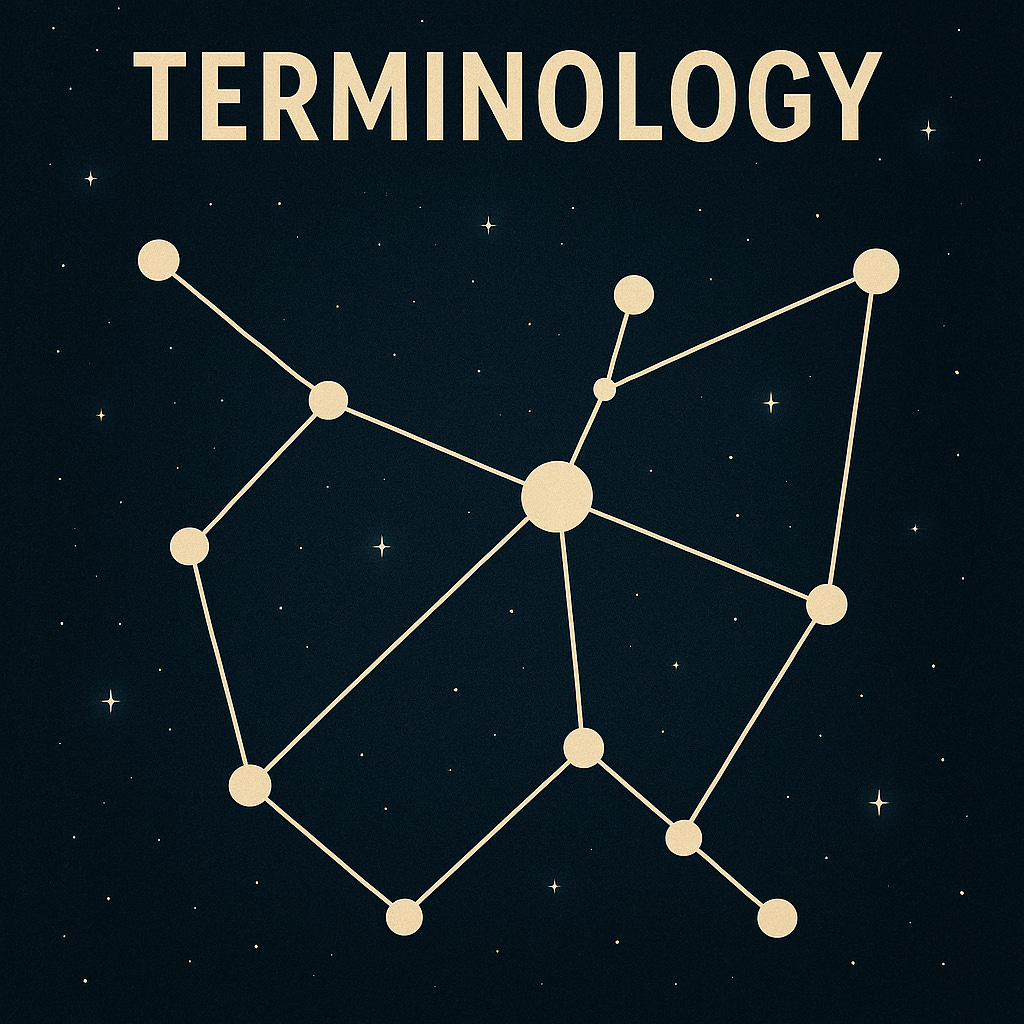Glossary
Finding a name for something is a way of evoking its existence, or allowing people to see a pattern where they previously saw nothing - Howard Rheingold
Agents
Autonomous entities that can perceive their environment, make decisions, and perform actions to achieve specific goals
Analysis
Interpreting data through statistical methods or analytical models
Attributes
Features that provide information about an entity and describe specific details to identify or classify it
Bug
An observable anomaly which results from a defect and is discovered because an inconsistency with expected behavior is noticed
Comprehension
The ability to grasp the meaning of information, texts, or concepts by decoding and interpreting data to recognize what is being communicated without delving into implications or connections
Concepts
Abstract general notions or mental representations of categories or objects
Context
The interpretive framework and corresponding knowledge, experience, and perspective that give meaning to facts, actions, or ideas and promotes understanding of why something matters, how it fits into a bigger picture, or what it implies
Data
Raw information collected through observations, measurements, or research.
Defect
Anything that must be changed in a design or implementation because it detracts from the system's ability to meet stakeholder's needs completely and effectively
Entities
Items of definition or reference that claim independent existence and a distinctive identify
Environment
The surrounding conditions, context, and external influences that affect entities, agents, or systems
Evidence
Anything presented in support of an assertion, as described here
Facts
Statements that can be proven true or false, are consistent with objective reality, and are specific, verifiable, and represent a concrete piece of information; typically derived from observations, evidence, experiments, and reliable sources
Failure
One or more errors in the system occur, are propagated, and cause the system itself to enter an unsafe, incorrect, or unacceptable operational state
Ideas
Specific instances of thinking that manifest as thoughts, plans, or opinions
Information
Data that has been processed and organized in a way that is meaningful for use in the form of facts, figures, and narratives.
Intentions
The aims, plans, or purposes that drive an agent to act in a certain way, through conscious decisions to perform specific actions to achieve desired outcomes
Knowledge
The understanding and awareness of justified true beliefs gained through experience, education, and the application of information
Language
A system of symbols used to communicate among entities.
Learning
The process of acquiring the skills and behaviors necessary to achieve and improve adaptation to the environment.
Mental models
Cognitive frameworks or representations that aid in understanding and interpreting the world, predicting outcomes, and guiding behavior
Objects
Instances of things with extensions in space and time
Operations
Capabilities that can be performed by and are provided by a class of entities
Peer reviews
Soliciting and dispositioning feedback from experts re artifacts and methods
Perceptions
The organization, identification, and interpretation of sensory information to represent and understand the information or the environment, as described here
Properties
Inherent behavior-oriented qualities possessed by entities that define their nature
Reality
The aggregation of all that is real or existent, grounded in the physical universe, and the laws that govern it. The state of things as they are, independent of perception, beliefs, or theories, whether observable or beyond human comprehension
Relationships
Connections between entities that define how they interact and relate to each other.
Things
Idealized, holistic classes that we mentally organize reality into to communicate core properties that justify treating them together as one conceptualization
Truth
Statements, propositions, and beliefs that align with facts or reality. A statement is true if it accurately reflects the state of affairs it describes. Truth is the foundational concept that underpins verifiable facts, ensuring consistency, objectivity, and coherence in our understanding of reality.
Understanding
Connecting new information with context including existing knowledge to make sense and gain insight of its broader implications, significance, and relationships. Wisdom The highest level of cognitive processing involves the ability to make sound judgments and decisions based on deep understanding and experience.
Yield (verification)
The portion of defects detected by verification relative to the total defects which could have been detected

